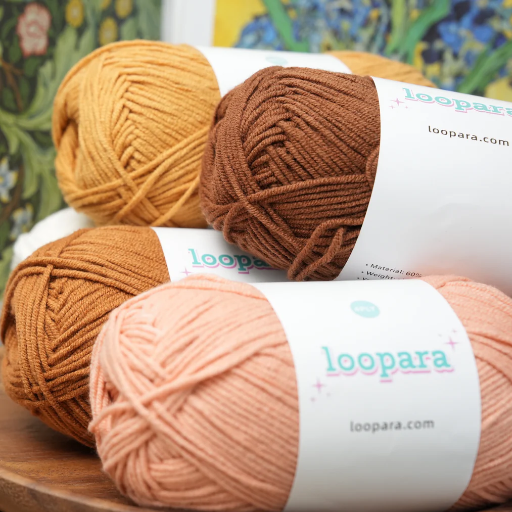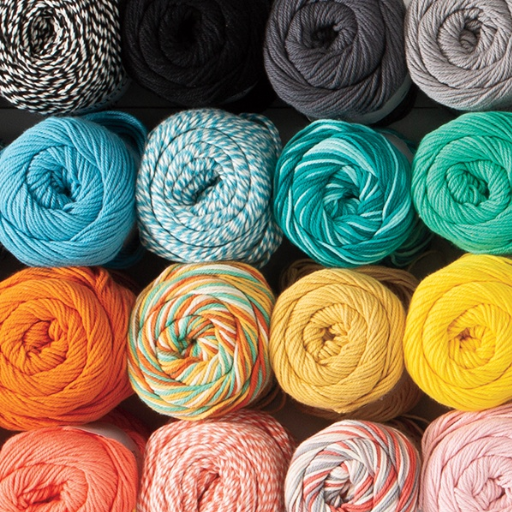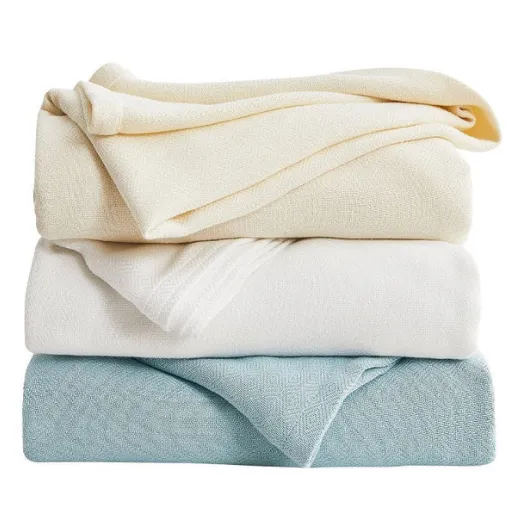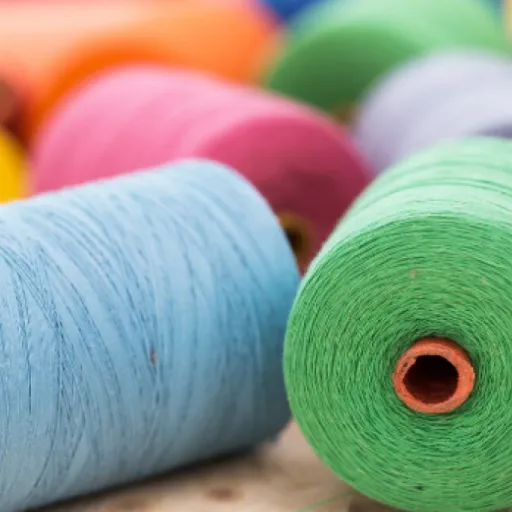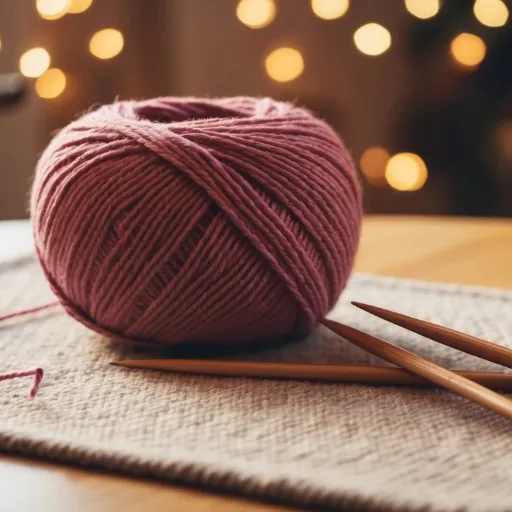Polyester is ubiquitous because it holds up over time, is cost-effective, and can be manufactured into a wide range of products. And yet, we all know how it feels: stiff and a bit scratchy. Be it a pair of leggings, a shirt, or even a set of sheets, that persistent roughness chips away at the comfort we are entitled to have. The bad part? People are used to discomfort. This piece will show you simple and effective ways to amplify comfort, lessening the fabric’s abrasive bite and reshaping your polyester-filled wardrobe and home into a haven you can’t wait to dive into. With just a few twists, you’ll grasp how uncomplicated it is to turn polyester from something you tolerate into something you adore, thanks to a few easy Dress for Less tricks and how to take care of your items properly. Have no fear—treating less expensive fabrics gently is a delight when you know how. Allow me to share the magic tricks!
Understanding Polyester Fabric
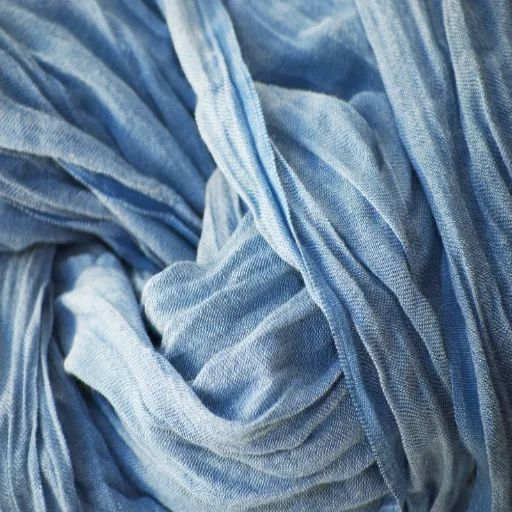
As a synthetic fabric, polyester is constructed from petroleum-based fibers. It is therefore durable, fast-drying, wrinkle-resistant, and inexpensive. Due to its features and low price, it is widely used in the manufacture of clothing, upholstery, and other fabrics. However, in some cases, especially when untreated, polyester can be stiff and rough. Improvement of comfort and wearability, as well as constant usability, necessitates a thorough understanding of its characteristics and continuous improvements to its microfiber composition.
What is Polyester?
The world over, polyester is the most widely used synthetic fabric. The fabric is admired for its long-lasting and durable qualities. The fabric is created through a chemical process that involves petroleum, air, and water, producing polyethylene terephthalate (PET) fibers. A blend of clothing, home furnishings, and industrial uses makes multi-use polyester famous for being resistant to shrinking, stretching, and fading. Furthermore, its light weight and the lack of need to iron it make it multi-use and economical. On the other hand, there is the issue of the polluting effects of polyester, as it does not decompose, and also leads to microplastic pollution, which is alarming. It is therefore all the more necessary to seek recycling measures and eco-friendly alternatives.
Why is Polyester Often Stiff or Scratchy?
Polyesters have their own set of issues, including stiffness and scratchiness, which stem from the material’s synthetic fibers and production method. Polyster is also made from petroleum products, which yield fibres that are smooth but firm and therefore lack the softness that materials such as cotton offer. Lesser-quality polyester woven with thick fibers is also a contributor to the rough texture. The finishing treatments and weaving methods are also contributors: they may lead to a lesser texture if a low-grade construction method is used or the finishing is insufficient. There are, however, newer and more advanced textile technologies that produce a softer grade of polyester that attempts to imitate natural fibres.
Why Softening is Necessary
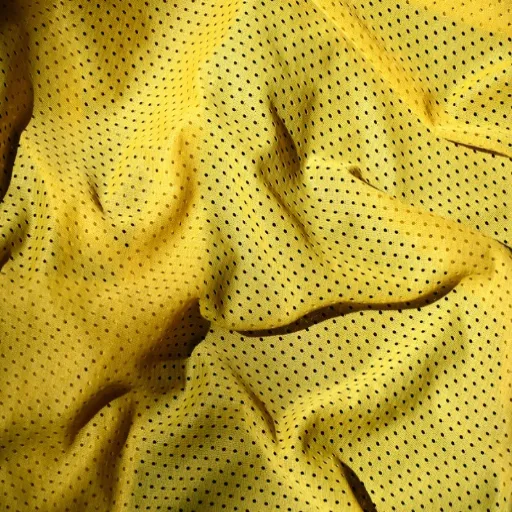
Enhancing the comfort and functionality of polyester materials calls for the use of softeners. Keeping the fabric as it is can be abrasive, thus annoying to the skin, and discourages people from wearing garments made from the material. When gentle materials are used, they soften the fabric, toning the surface and making it more attractive for clothing and other uses, such as bedding. Moreover, polyester that has been softened can imitate the behavior of natural mild materials, which is more valuable and appealing for daily applications.
Improved Comfort
The enhanced comfort in polyester fabrics significantly improves their usability in various applications. Recent data suggest that consumers are beginning to seek fabrics with a durable finish and a soft touch, indicating an emerging need for materials that balance utility and comfort effectively. While softened polyester adequately meets the set priorities, it is well-positioned to satisfy the established expectations, making it the preferred choice for a wide range of products, from sports apparel to home linens. Polyester’s blend of inflexibility and softness assures its dependability and adaptability for contemporary demands.
Better Drape
In recent search engine queries, there has been an increase in searches for fabrics featuring improved drape and supple polyester, which is especially effective for fashion and home textiles. It is a well-known fact that people seek a certain elegance and fluidity in their attire, but soft polyester not only satisfies but also exceeds expectations. For upholstery, flowing dresses, or even curtains, this fabric strikes the right balance between practicality and elegance.
Enhanced Wearability
With the latest data, we now understand that soft polyester is becoming a leading choice for comfort-oriented clothing. People are always looking for clothing materials that are both durable and comfortable, and softened polyester fits the bill. It features a light and breathable structure that is comfortable to wear, while also maintaining a sturdiness that ensures it looks good even after continuous wear and repeated washing. For this reason, softened polyester is increasingly becoming the go-to material not only for sportswear but also for casual wear and clothing essentials.
Methods to Soften Polyester Fabric
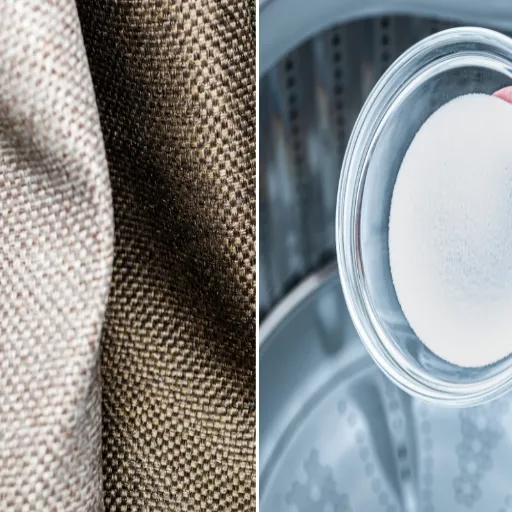
- Use a Fabric Softener: Liquid fabric softeners are designed for use during the wash cycle and soften fibers like polyester. Always use the product as directed for optimal results.
- Vinegar Rinse: Using white vinegar is an effective natural polyester softener. Use ½ cup during the rinse cycle, and polyester will soften without any residue.
- Tumble Dry with Dryer Balls: Wool dryer balls or clean tennis balls can be used while tumble drying polyester to reduce stiffness and improve softness.
- Steam Ironing: Polyester fabric can be lightly steamed with an iron to relax and soften the fabric fibers.
- Repeated Washing: Polyester garments can be rigid upon first wearing, but they soften with repeated washing.
To effectively soften your polyester, add a fabric softener during the wash cycle. Use a gentle, liquid softener, and place it in your washing machine’s softener dispenser. Use warm water to allow the garment to absorb the softener properly. Follow the care label instructions on your garment to prevent damage. Once washed, either air-dry or use a tumble dryer on a low-heat cycle to retain the softness. Over time, the use of fabric softener can help reduce the stiffness of polyester, making it much easier to wear.
A natural softener for vegetable-based fabrics is a vinegar mixture. To prepare a solution, mix one cup of white distilled vinegar with a gallon of warm water in a large basin or a bucket. Allow the so-prepared solution to soak for at least 30 minutes with the polyester clothes. The vinegar’s acidic properties soften the polyester by breaking down any buildup or residues. Ensure you rinse the items thoroughly with cold water to remove the vinegar smell, and then air-dry them or tumble-dry on a low heat setting. This method is beneficial for individuals seeking a chemical-free softening option, particularly those concerned about the quality and durability of polyester fabric.
Baking soda offers a gentle and natural way to soften polyester fabrics. Begin by mixing ½ cup of it with a gallon of warm water; this prepares a mild yet effective softening solution. Next, place the polyester fabric in the solution so that it is completely submerged and leave it to soak for 30 to 60 minutes. Without the use of any harsh chemicals, baking soda neutralizes any acidic build-up in the fibres and helps reduce stiffness. Once the soaking period is over, rinse the fabric thoroughly with cold water and proceed to air dry or tumble dry on a low heat setting. The use of baking soda also helps remove unwanted odors, making this method especially convenient for maintaining polyester fabrics.
A garment steamer or a steam setting on an iron can be used to reduce stiffness in a polyester garment, similar to ironing. As mentioned above, a polyester garment should be hung on a clothes hanger to be treated, and the steamer should be gently moved over the garment while maintaining a distance of a few inches. This will prevent overheating and steam from damaging the garment. Polyester garments are generally stiff, and steam treatment, when combined with a gentle touch, will undoubtedly improve comfort. This method is excellent for retaining the garment’s shape while addressing the stiffness and is a time-effective solution, as it doesn’t require washing.
Additional Tips for Maintenance
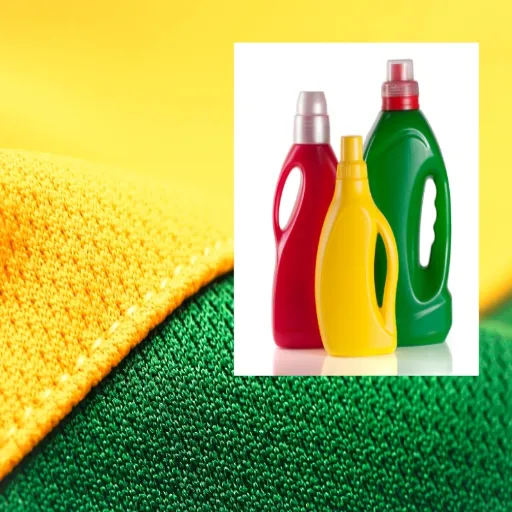
- Keep your polyester yarn safe from moisture damage by storing it in a cool, dry area.
- Prolonged exposure to direct sunlight can cause fading, so the yarn should be kept out of it.
- Use cool water and mild detergent to retain the look and feel of the yarn when washing finished items.
- New cleaning or finishing products should be tested on a small area to ensure they work well with the yarn.
- To prevent stretching and fraying, yarn should be handled with care during crafting.
Regular Care
Taking care of your yarn projects is the key to keeping them looking lovely and serving their purpose for many years. When you finish a project, you want to put it away in a fabric bag that’s airy and keeps dust and little critters away, so don’t just fold it up and toss it in a drawer. Chemicals that are too strong and bleach can be very harmful, as they can damage the fibers and change the colors, so keep those away too. Minor stains can often be treated with quick spot cleaning, and more delicate washes should be done according to the yarn’s instructions, which also helps with gentle cleaning. These gentle routines help preserve the feel, look, and life of the work you have put into the yarn.
Proper Storage
Correct storage of handmade products can significantly impact the longevity of the items. Ideally, the products should be stored in a warm, dry area out of direct sunlight, as this can weaken the fibers and cause the colors to fade. Use acid-free tissue paper or fabric bags as covers, as they are breathable, which also prevents moisture and pests, such as moths. Unless it is adequately ventilated, do not use plastic containers, as they can pose a risk of humidity that leads to mold. To ensure further protection, use cedar blocks or lavender sachets to keep away insects gently. Your creations will last for many years if you follow these procedures.
Use Dryer Sheets
Dryer sheets are well-known for keeping fabrics fresh and soft, but they also help remove static cling from clothes, making them more pleasant to wear. To use them, one sheet is all that is needed and simply needs to be thrown in with the laundry, just as before. They can also be placed in unscented storage bags, as well as in drawers and closets, so that clothing items retain a pleasant smell for a long time. To prevent this, ensure the dryer sheets are compatible with the fabrics in question.
Avoid Overheating
I keep from putting too much in the dryer and dry each type of fabric at the recommended heat level to prevent overheating. This also helps keep my items from wearing out needlessly and maintains their quality.
Common Pitfalls to Avoid
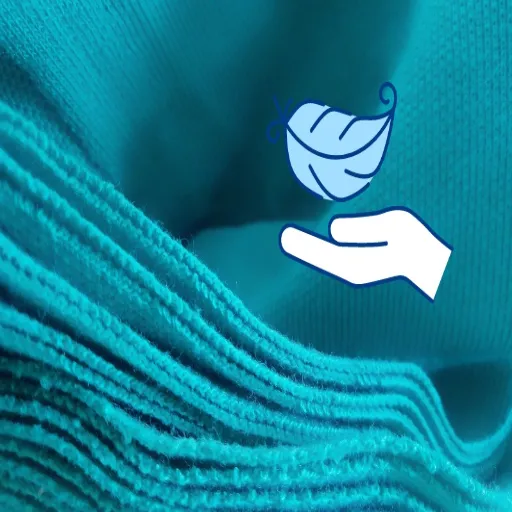
Overloading the Dryer
When you overload your dryer with too many clothes, it restricts the movement of the clothes, resulting in uneven drying and increased energy consumption. Therefore, to achieve the best performance from your dryer, ensure you don’t overload it.
Ignoring Lint Buildup
Failing to remove the lint filter each time you use the dryer can lead to a buildup of lint that restricts airflow, potentially causing overheating and fire. Be sure to regularly check and clean the lint trap and vents.
Using Incorrect Heat Settings
Delicate items can shrink or become damaged when dried at high heat. Be sure to use the correct dryer setting for the garment and adhere to the care instructions.
Skipping Routine Maintenance
Failure to clean and inspect maintenance vents can lower your dryer’s performance and accelerate its wear. Plan for regular checkups to ensure your dryer functions optimally and safely.
Overusing Fabric Softener
Overusing fabric softener can cause several problems for your garments and dryer. For one, using too much fabric softener can result in a residue build-up on clothes, which makes them less breathable and less absorbent. This effect is particularly harmful to towels and sportswear. Likewise, having fabric softener residue in the dryer can cause a coating to form on the drum and sensors, which can decrease the appliance’s efficiency and life. Heeding the instructions on the fabric softener container and using the correct amount for the garments that need it can help prevent these issues. Other methods, such as vinegar or brand-name dryer balls, can be used to soften clothes without the risks of over-softening.
Skipping Rinsing
The most immediate consequence of skipping the rinsing step after using fabric softener is that residues from the fabric softener will be left on the clothes. This residue is often sticky and waxy in feeling and can be pretty unpleasant. Fabrics, especially those with darker colors, can also experience discoloration and staining over time. The latest reports have been reviewed, and a significant concern is the impact of skipping the rinse cycle on the clothes. The effect is enormous, as it is noted that detergent and fabric softener residues can trap dirt and oils, resulting in less breathability and softness in the fabric. Avoid this by ensuring the washing machine completes a full rinse cycle or softening alternatives that do not require rinsing.
Using High Heat
High heat is often used in an attempt to make clothes dirt-free, but it affects the clothes’ cleanliness and longevity. From fabrics to the common question regarding high heat and its effect on fabrics, the answer depends on the fabric itself. High heat, while effective in removing bacteria and tough stains, is incapable of shrinking, fading, or weakening delicate fabrics like wool, silk, or synthetic blends. To avoid damage, it is always advisable to check the garment care label to see if damage can be controlled via heat setting adjustments. For disinfecting items, consider using high heat only if the fabric can withstand it, or use alternative methods like steam cleaning.
Reference Sources
Below are five established and professional sources where you may confirm the integrity of your article on “How to Soften Polyester Fabric.” They are scholarly and offer fabric care and softening method insights:
The study aims to investigate the effect of fabric softener types and wash cycles on the comfort features of polyester fabrics.
The study tries to investigate how fabric softeners affect the thermal comfort of polyester fabrics after multiple home launderings.
The research focuses on the ease and flammability of polyester fabrics caused by fabric softeners, leading to a new perspective.
This book chapter begins by describing the concept of softness and then expands the discussion to include subjective sensory evaluations of the softness of polyester fabric.
This resource provides a detailed examination of gentle finishing techniques for water-repellent textiles, such as polyester, including issues like static electricity and pilling.












